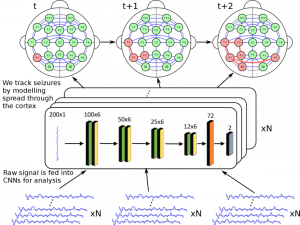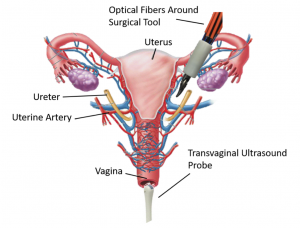Developed by a Johns Hopkins-led research team, the Pancreatic Tumor Segmentation Dataset may be the key for training AI models... Read More
Researchers
Todd McNutt
Jeffrey H. Siewerdsen
Related Projects
Noninvasive Localization of Epileptic Seizures
 Epilepsy affects nearly 3.5 million people in the United States and is linked to a five-fold increase in mortality. While epilepsy is often controlled with medication, 20-40% of patients are medically refractory and continue to experience seizures in spite of drug therapies. The alternative for...
Epilepsy affects nearly 3.5 million people in the United States and is linked to a five-fold increase in mortality. While epilepsy is often controlled with medication, 20-40% of patients are medically refractory and continue to experience seizures in spite of drug therapies. The alternative for...
Photoacoustic-Guided Hysterectomy Performed with a da Vinci Surgical Robot
 Approximately 600,000 hysterectomies are performed each year in the US to remove the uterus. This surgery requires cauterization and clipping of the uterine arteries, located close to and overlapping the ureter, which can cause accidental injury to the ureter. We are developing...
Approximately 600,000 hysterectomies are performed each year in the US to remove the uterus. This surgery requires cauterization and clipping of the uterine arteries, located close to and overlapping the ureter, which can cause accidental injury to the ureter. We are developing...
SpineCloud
The overall goal of the SpineCloud project is to gain understanding and predictive power of the factors underlying spine surgery outcomes – particularly the unacceptably broad variability associated with spinal fusion. Such capability will yield evidence-based insight and decision support to improve patient selection, enable more optimal surgical planning, identify...
Related News
Johns Hopkins researchers have developed a new method that uses existing radiology reports to train AI models to locate tumors... Read More
The National Institutes of Health awarded Zhou and his team a four-year, $2.8 million R01 grant to develop an AI... Read More
Johns Hopkins researchers present the voice-controlled X-ray imaging system that earned a Best Paper Award at IPCAI 2025.... Read More





